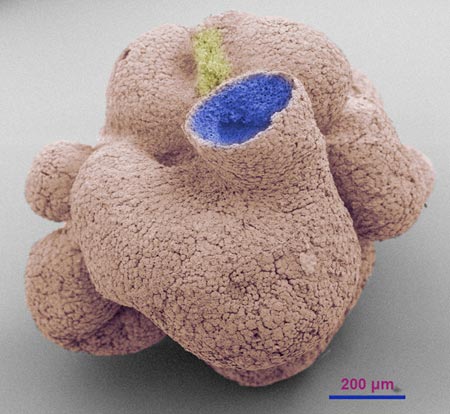The Chinese scientists, from The Nanjing Institute of Geology and Paleontology at the Chinese Academy of Sciences have discovered a 600 million-year-old sponge-like fossil at Weng’an biota [is a phosphorus-rich geological formation known for its well preserved fossils] in southwest province of Guizhou. The fossil is named as Eocyathispongia qiania.
STRUCTURE OF FOSSIL
- The study carried with the help of Synchrotron X-ray tomography and scanning electron microscope characterized the fossil as 1.2 mm wide and 1.1 m tall displaying multiple characters of modern adult sponges.
- It is composed of hundreds of thousands of cells, and the structure consists of three adjacent hollow tubes with a common base.
- The external surface of the fossil has flat tile-like features with small pores that resemble pinacocytes (an elastic layer which keeps water out) on modern sponges.
- The inner surface of the fossilized animal is surrounded with a regular pattern of uniform pits which similar to choanocytes (known as collar cells).
- It further has a simple canal system for the inflow or outflow of water.
- Thus fossil can be defined as the one that has lived a filter-feeding life on the shallow sea floor with the help of its simplified water canal system.
SCIENTIST’S VIEW
- Yin Zongjun says,” the fossil featured multiple characteristics of modern sponges, including three tubular chambers and a highly porous surface which would have allowed water to flow in and out of the animal”.
- Zhu Maoyan says “It’s the world’s earliest and most credible fossil record of primitive animal bodies”.
Penned by Sunaina Gupta
AffairsCloud Recommends Oliveboard Mock Test
AffairsCloud Ebook - Support Us to Grow
Govt Jobs by Category
Bank Jobs Notification





